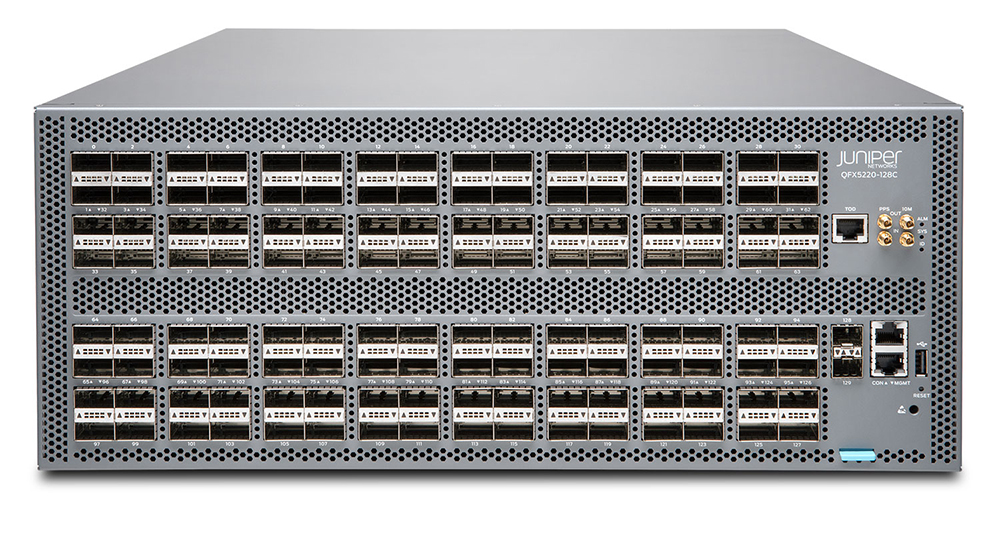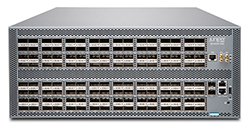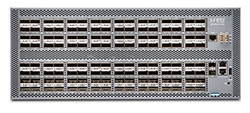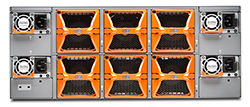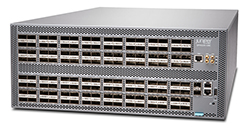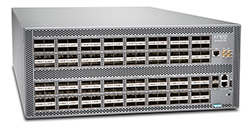Overview:
Cloud providers and network operators are increasingly deploying scale-out, spine-and-leaf IP fabric architectures built on fixed-configuration switches to support growing east-west traffic in the data center.
The QFX5220 Switch is optimally suited for these high-speed, high-density, spine-and-leaf IP fabrics. Supporting 400GbE, 200GbE*, 100GbE, 50GbE*, 40GbE, 25GbE, and 10GbE connections and offering an advanced L2, L3, and MPLS feature set, the QFX5220 enables cloud service providers and network operators to build large, next-generation IP fabrics that support network virtualization and intelligent traffic forwarding based on proven, Internet-scale technology.
Product Description
The Juniper Networks QFX5220 Switch is a next-generation, fixed-configuration spine-and-leaf switch. It offers flexible, cost-effective, high-density 400GbE, 200GbE*, 100GbE, 50GbE*, 40GbE, 25GbE, and 10GbE interfaces for server and intra-fabric connectivity, and delivers a versatile, future-proofed solution for today’s data centers.
QFX5220 switches support advanced Layer 2, Layer 3, and MPLS features. For large public cloud providers—early adopters of high-performance servers to meet explosive workload growth—the QFX5220 supports very large, dense, and fast 400GbE IP fabrics based on proven Internet scale technology. For enterprise customers seeking investment protection as they transition their server farms from 10GbE to 25GbE, the QFX5220 switch also provides a high radix-native 100GbE lean-spine option at reduced power and a smaller footprint.
Two QFX5220 models are available, supporting different configurations and use cases. Delivering 25.6 Tbps of bandwidth, both models are optimally designed for spine-and-leaf deployments in enterprise, HPC, service provider, and cloud data centers.
QFX5220-32CD: The QFX5220-32CD offers 32 ports in a low-profile 1 U form factor. High-speed ports support a wide variety of port configurations, including 400GbE, 200GbE, 100GbE, 25GbE, 40GbE, and 10GbE. The QFX5220-32CD is equipped with two AC or DC power supplies, providing 1+1 redundancy when all power supplies are present, and six hot-swappable fans offering ports-to-FRUs (AFO) or FRUs-to-ports (AFI) airflow options, providing (5x2+1)+1 redundancy.
QFX5220-128C: The QFX5220-128C offers 128 ports in a 4 U form factor. The high-speed ports support a wide variety of configurations, including 100GbE and 40GbE. The switch is equipped with four AC or DC power supplies, providing 2+2 redundancy when all power supplies are present, and six hot-swappable ports-to-FRUs (AFO) airflow fans, providing (5x2+1) +1 redundancy.
Both QFX5220 switch models include an Intel XeonD-1500 processor to drive the control plane, which runs the Juniper Networks Junos® OS Evolved operating system software.
Product Highlights
The QFX5220 includes the following capabilities. Please refer to the Specifications section for currently shipping features.
Native 400GbE Configuration
The QFX5220-32CD offers 32 ports in a 1 U form factor. The high-speed ports support a wide variety of configurations, including 100GbE and 400GbE.
High-Density Configurations
The QFX5220 switches are optimized for high-density fabric deployments. The QFX5220-32CD provides an option of either 32 ports of 400GbE, 100GbE, or 40GbE, while the QFX5220-128C provides an option of either 128 QSFP28 100GbE ports or 64 40GbE QSFP ports.
Flexible Connectivity Options
The QFX5220 offers a choice of interface speeds for server and intra-fabric connectivity, providing deployment versatility and investment protection.
- Rich automation capabilities: The QFX5220 switches support a number of network automation features for plug-and-play operations, including zero-touch provisioning (ZTP), operations and event scripts, automatic rollback, and Python scripting.
- Advanced Junos Evolved features: The QFX5220 switch supports features such as BGP add-path, MPLS, L3 VPN, RoCEv2, and Multicast capabilities.
- Junos Evolved software architecture: The QFX5220 supports a modular Junos Evolved software architecture that allows the switch’s control and data plane processes and functions to run in parallel, maximizing utilization of the high-performance quad-core CPU, support for seamless component upgrade without bringing the switch down, and support for containerization, enabling application deployment using LXC or Docker.
Deployment Options
The QFX5220-32CD can be deployed as a universal device in cloud data centers to support 100GbE server access and 400GbE spine-and-leaf configurations, optimizing data center operations by using a single device across multiple layers of the network (see Figure 1).
The QFX5220-128C is a high-radix 100GbE lean-spine switch optimized to aggregate 10GbE and 25GbE top-of-rack switches in these environments. Many cloud, service provider, data center, and enterprise networks are deploying 100GbE to handle growing demand. Figure 2 and Figure 3 show multiple use cases with the QFX5220-128C as a lean spine.
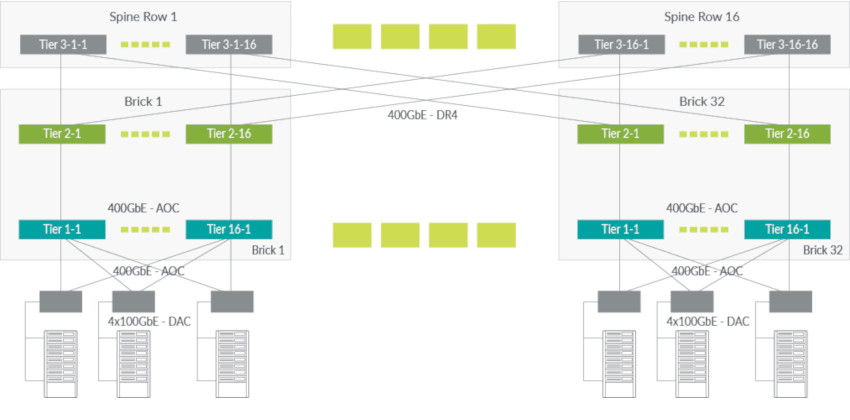
Figure 1: Typical cloud data center deployment for the QFX5220-32CD

Figure 2: 100GbE fabric in a typical cloud data center
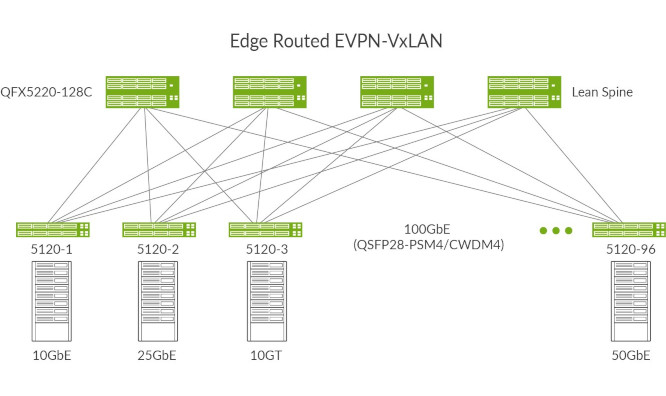
Figure 3: Private cloud data center with the QFX5220-128C as lean spine
*Reserved for future release
Architecture and Key Components:
The QFX5220 can be used in L3 fabrics and L2 networks. You can choose the architecture that best suits your deployment needs and easily adapt and evolve as requirements change over time. The QFX5220 serves as the universal building block for these two switching architectures, enabling data center operators to build cloud networks in their own way.
- Layer 3 fabric: For customers looking to build scale-out data centers, a Layer 3 spine-and-leaf Clos fabric provides predictable, nonblocking performance and scale characteristics. A two-tier fabric built with QFX5220 switches as leaf devices and Juniper Networks QFX10000 line of Switches as the spine can scale to support up to 128 40GbE ports or 128 25GbE and/or 10GbE server ports in a single fabric. One of the most complicated tasks when building an IP fabric is assigning all the implementation details, including IP addresses, BGP autonomous system numbers, routing policies, loopback address assignments, and others. Automating the creation of an IP fabric at a large scale is equally difficult. To address these challenges, Juniper has created the OpenClos project to provide free, open-source tools that automate the creation of IP fabrics in the data center. A set of Python scripts developed as an open source project on GitHub, OpenClos takes a set of inputs that describe the shape and size of a data center and produces switch configuration files and a cabling plan
Junos Evolved ensures a high feature and bug fix velocity and provides first-class access to system state, allowing customers to run DevOps tools, containerized applications, management agents, specialized telemetry agents, and more.
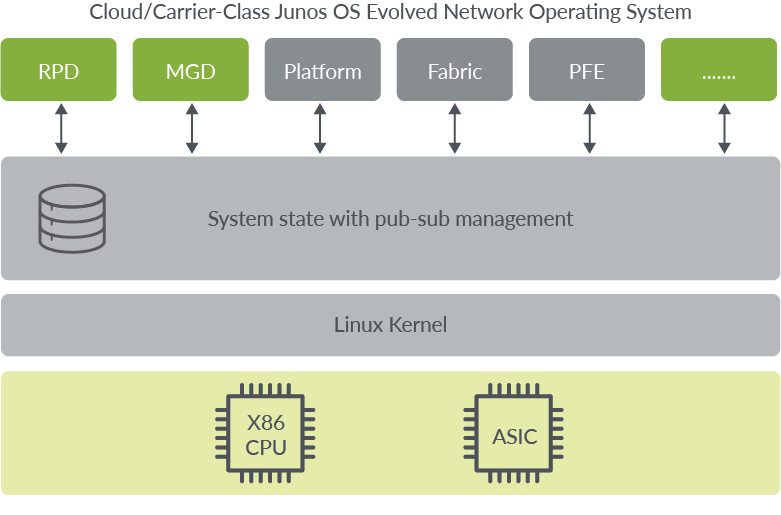
Cloud/Carrier-Class Junos OS Evolved Network Operating System
Features and Benefits:
- Automation and programmability: The QFX5220 supports numerous network automation features, including operations and event scripts and ZTP.
- Cloud-level scale and performance: The QFX5220 supports best-in-class cloud-scale L2/L3 deployments with a low latency of 750 ns and a superior scale and performance. This includes L2 support for 8192 media access control (MAC) addresses and Address Resolution Protocol (ARP) learning, which scales up to 32,000 entries at 500 frames per second. It also includes L3 support for 336,000 longest prefix match (LPM) routes and 380,000 host routes on IPv4. Additionally, the QFX5220 supports 130,000 LPM routes and 130,000 host routes on IPv6, 128-way equal-cost multipath (ECMP) routes, and a filter that supports 768 (ingress) and 512 (egress) exact match filtering rules. The QFX5220 supports up to 128 link aggregation groups, 4096 VLANs, and Jumbo frames of 9216 bytes. Junos Evolved provides configurable options through a CLI, enabling each QFX5220 to be optimized for different deployment scenarios.
- MPLS: The QFX5220 supports a broad set of MPLS features, including L3 VPN, RSVP traffic engineering, and LDP to support standards-based multitenancy and network virtualization with per-flow service-level agreements (SLAs) at scale. The QFX5220 can also be deployed as a low-latency MPLS label-switching router (LSR) or MPLS provider edge (PE) router in smaller scale environments. The QFX5220, along with Juniper Networks QFX5100 and QFX5200 switches, are the most compact, low-latency, high-density, low-power family of switches to offer an MPLS feature set in the industry.
- IEEE 1588 PTP Boundary Clock with Hardware Timestamping*: IEEE 1588 PTP Transparent/Boundary Clock is supported on QFX5220, enabling accurate and precise sub-microsecond timing information in today’s data center networks. In addition, the QFX5220 supports hardware timestamping; timestamps in Precision Time Protocol (PTP) packets are captured and inserted by an onboard field-programmable gate array (FPGA) on the switch at the physical (PHY) level.
- Data packet timestamping*: When the optional data packet timestamping feature is enabled, selected packets flowing through QFX5220 switches are timestamped with references to the recovered PTP clock. When these packets are received by nodes in the network, the packet timestamping information can be mirrored onto monitoring tools for detailed analysis, helping identify bottlenecks in the network that cause latency. This information also helps with network performance analysis and record keeping for legal and compliance purposes, which is required by certain business transactions such as financial trading, video streaming, and research establishments.
- RoCEv2: As a switch capable of transporting data as well as storage traffic over Ethernet, the QFX5220 provides an IEEE data center bridging (DCB) converged network between servers with disaggregated flash storage arrays or an NVMe-enabled storage area network (SAN). The QFX5220 offers a full-featured DCB implementation that provides strong monitoring capabilities on the top-of-rack switch for SAN and LAN administration teams to maintain clear separation of management. The RDMA over Converged Ethernet version 2 (RoCEv2) transit switch functionality, including priority-based flow control (PFC) and Data Center Bridging Capability Exchange (DCBX), are included as part of the default software.
- Junos OS Evolved: Junos Evolved is a native Linux operating system that incorporates a modular design of independent functional components and enables individual components to be upgraded independently while the system remains operational. Component failures are localized to the specific component involved and can be corrected by upgrading and restarting that specific component without having to bring down the entire device.
- Retained state: State is the retained information or status pertaining to physical and logical entities. It includes both operational and configuration state, comprising committed configuration, interface state, routes, hardware state, and what is held in a central database called the distributed data store (DDS). State information remains persistent, is shared across the system, and is supplied during restarts.
- Feature support: All key networking functions such as routing, bridging, management software, and management plane interfaces, as well as APIs such as CLI, NETCONF, Juniper Extension Toolkit (JET), Junos Telemetry Interface (JTI), and the underlying data models, resemble those supported by Junos. This ensures compatibility and eases the transition to Junos Evolved.
Junos Telemetry Interface
The QFX5220 supports Junos Telemetry Interface (JTI), a modern telemetry streaming tool that provides performance monitoring in complex, dynamic data centers. Streaming data to a performance management system lets network administrators measure trends in link and node utilization and troubleshoot issues such as network congestion in real time.
JTI provides:
- Application visibility and performance management by provisioning sensors to collect and stream data and analyze the application and workload flow path through the network
- Capacity planning and optimization by proactively detecting hotspots and monitoring latency and microbursts
- Troubleshooting and root cause analysis via high-frequency monitoring and correlating overlay and underlay networks.

